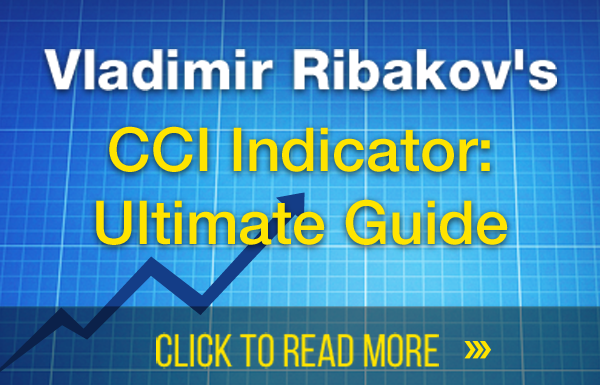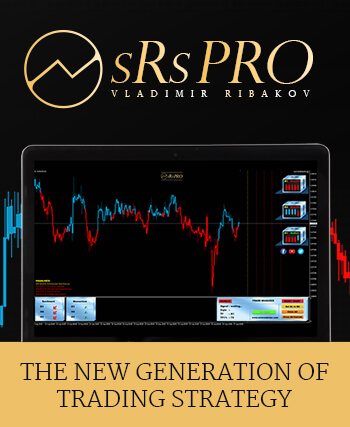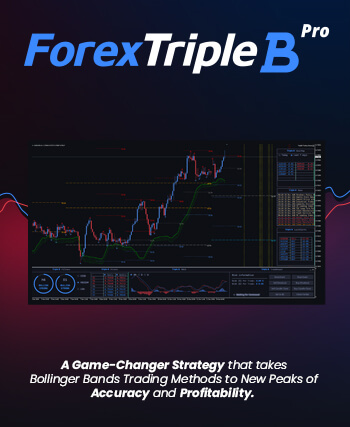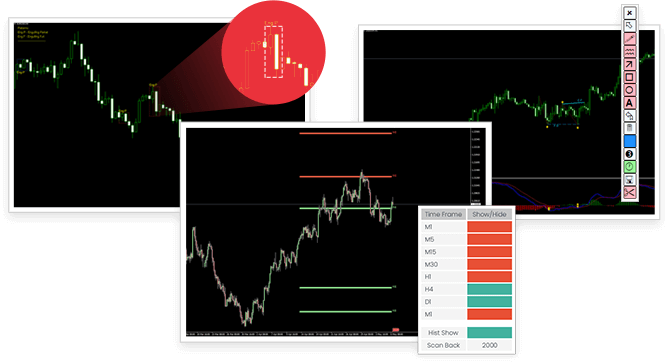
Introduction to CCI – Commodity Channel Index
Developed by Donald Lambert and featured in Commodities magazine in 1980, the Commodity Channel Index (CCI) is a versatile indicator that can be used to identify a new trend or warn of extreme conditions. Lambert originally developed CCI to identify cyclical turns in commodities, but the indicator can successfully applied to indices, ETFs, stocks and other securities. In general, CCI measures the current price level relative to an average price level over a given period of time. CCI is relatively high when prices are far above their average. CCI is relatively low when prices are far below their average. In this manner, CCI can be used to identify overbought and oversold levels.
Calculation
CCI measures a security’s variation from the statistical mean.
The CCI is calculated as the difference between the typical price of a commodity and its simple moving average, divided by the mean absolute deviation of the typical price. The index is usually scaled by an inverse factor of 0.015 to provide more readable numbers:
,
where the pt is the 
For scaling purposes, Lambert set the constant at 0.015 to ensure that approximately 70 to 80 percent of CCI values would fall between −100 and +100. The CCI fluctuates above and below zero. The percentage of CCI values that fall between +100 and −100 will depend on the number of periods used. A shorter CCI will be more volatile with a smaller percentage of values between +100 and −100. Conversely, the more periods used to calculate the CCI, the higher the percentage of values between +100 and −100.
Interpretation
Traders and investors use the commodity channel index to help identify price reversals, price extremes and trend strength. As with most indicators, the CCI should be used in conjunction with other aspects of technical analysis. CCI fits into the momentum category of oscillators. In addition to momentum, volume indicators and the price chart may also influence a technical assessment. It is often used for detecting divergences from price trends as an overbought/oversold indicator, and to draw patterns on it and trade according to those patterns. In this respect, it is similar to bollinger bands, but is presented as an indicator rather than as overbought/oversold levels.
The CCI typically oscillates above and below a zero line. Normal oscillations will occur within the range of +100 and −100. Readings above +100 imply an overbought condition, while readings below −100 imply an oversold condition. As with other overbought/oversold indicators, this means that there is a large probability that the price will correct to more representative levels.
The CCI has seen substantial growth in popularity amongst technical investors; today’s traders often use the indicator to determine cyclical trends in not only commodities, but also equities and currencies.
The CCI, when used in conjunction with other oscillators, can be a valuable tool to identify potential peaks and valleys in the asset’s price, and thus provide investors with reasonable evidence to estimate changes in the direction of price movement of the asset.
Lambert’s trading guidelines for the CCI focused on movements above +100 and below −100 to generate buy and sell signals. Because about 70 to 80 percent of the CCI values are between +100 and −100, a buy or sell signal will be in force only 20 to 30 percent of the time. When the CCI moves above +100, a security is considered to be entering into a strong uptrend and a buy signal is given. The position should be closed when the CCI moves back below +100. When the CCI moves below −100, the security is considered to be in a strong downtrend and a sell signal is given. The position should be closed when the CCI moves back above −100.
Since Lambert’s original guidelines, traders have also found the CCI valuable for identifying reversals. The CCI is a versatile indicator capable of producing a wide array of buy and sell signals.
- CCI can be used to identify overbought and oversold levels. A security would be deemed oversold when the CCI dips below −100 and overbought when it exceeds +100. From oversold levels, a buy signal might be given when the CCI moves back above −100. From overbought levels, a sell signal might be given when the CCI moved back below +100.
- As with most oscillators, divergences can also be applied to increase the robustness of signals. A positive divergence below −100 would increase the robustness of a signal based on a move back above −100. A negative divergence above +100 would increase the robustness of a signal based on a move back below +100.
- Trend line breaks can be used to generate signals. Trend lines can be drawn connecting the peaks and troughs. From oversold levels, an advance above −100 and trend line breakout could be considered bullish. From overbought levels, a decline below +100 and a trend line break could be considered bearish.
New Trend Emerging
As noted above, the majority of CCI movement occurs between -100 and +100. A move that exceeds this range shows unusual strength or weakness that can foreshadow an extended move. Think of these levels as bullish or bearish filters. Technically, CCI favors the bulls when positive and the bears when negative. However, using a simple zero line crossovers can result in many whipsaws. Although entry points will lag more, requiring a move above +100 for a bullish signal and a move below -100 for a bearish signal reduces whipsaws.
The chart below shows Caterpillar (CAT) with 20-day CCI. There were four trend signals within a seven month period. Obviously, a 20-day CCI is not suited for long-term signals. Chartists need to use weekly or monthly charts for long-term signals. The stock peaked on 11-Jan and turned down. CCI moved below -100 on 22-January (8 days later) to signal the start of an extended move. Similarly, the stock bottomed on 8-February and CCI moved above +100 on 17-February (6 days later) to signal the start of an extended advance. CCI does not catch the exact top or bottom, but it can help filter out insignificant moves and focus on the larger trend.
CCI triggered a bullish signal when CAT surged above 60 in June. Some traders may have considered the stock overbought and the reward-to-risk ratio unfavorable at these levels. With the bullish signal in force, focus would have been on bullish setups with a good reward-to-risk ratio. Notice that the stock retraced around 62% of the prior advance and formed a falling flag by the end of June. The subsequent surge above the flag trend line provided another bullish signal with CCI still in bull mode.
Overbought/Oversold
Identifying overbought and oversold levels can be tricky with the Commodity Channel Index (CCI), or any other momentum oscillator for that matter. First, CCI is an unbound oscillator. Theoretically, there are no upside or downside limits. This makes an overbought or oversold assessment subjective. Second, securities can continue moving higher after an indicator becomes overbought. Likewise, securities can continue moving lower after an indicator becomes oversold.
The definition of overbought or oversold varies for the Commodity Channel Index (CCI). ±100 may work in a trading range, but more extreme levels are needed for other situations. ±200 is a much harder level to reach and more representative of a true extreme. Selection of overbought/oversold levels also depends on the volatility of the underlying security. The CCI range for an index ETF, such as SPY, will be usually be smaller than for a most stocks, such as Google.
The chart above shows Google (GOOG) with CCI(20). Horizontal lines at ±200 were added using the advanced indicators options. From early February to early October (2010), Google exceeded ±200 at least five times. The red dotted lines show when CCI moved back below +200 and the green dotted lines show when CCI moved back above -200. It is important to wait for these crosses to reduce whipsaws should the trend extend. Such a system is not fool proof though. Notice how Google kept on moving higher even after CCI became overbought in mid September and moved below -200.
Bullish Bearish Divergences
Divergences signal a potential reversal point because directional momentum does not confirm price. A bullish divergence occurs when the underlying security makes a lower low and CCI forms a higher low, which shows less downside momentum. A bearish divergence forms when the security records a higher high and CCI forms a lower high, which shows less upside momentum. Before getting too excited about divergences as great reversal indicators, note that divergences can be misleading in a strong trend. A strong uptrend can show numerous bearish divergences before a top actually materializes. Conversely, bullish divergences often after appear in extended downtrends.
Confirmation holds the key to divergences. While divergences reflect a change in momentum that can foreshadow a trend reversal, chartists should set a confirmation point for CCI or the price chart. A bearish divergence can be confirmed with a break below zero in CCI or a support break on the price chart. Conversely, a bullish divergence can be confirmed with a break above zero in CCI or a resistance break on the price chart.
The chart above shows United Parcel Service (UPS) with 40-day CCI. A longer timeframe, 40 versus 20, was used to reduce volatility. There are three sizable divergences over a seven month period, which is actually quite a few for just seven months. First, UPS raced to new highs in early May, but CCI failed to exceed its March high and formed a bearish divergence. A support break on the price chart and CCI move into negative territory to0 confirm this divergence a few days later. Second, a bullish divergence formed in early July as the stock moved to a lower low, but CCI formed a higher low. This divergence was confirmed with a CCI break into positive territory. Also notice that UPS filled the late June gap with a surge in early July. Third, a bearish divergence formed in early September and this was confirmed when CCI dipped into negative territory. Despite a CCI confirmation, price never broke support and the divergence did not result in a trend reversal. Not all divergences produce good signals.
Conclusions
CCI is a versatile momentum oscillator that can be used to identify overbought/oversold levels or trend reversals. The indicator becomes overbought or oversold when it reaches a relative extreme. That extreme depends on the characteristics of the underlying security and the historical range for CCI. Volatile securities are likely to require greater extremes than docile securities. Trend changes can be identified when CCI crosses a specific threshold between zero and 100. Regardless of how CCI is used, chartists should use CCI in conjunction with other indicators or price analysis. Another momentum oscillator would be redundant, but On Balance Volume (OBV) or the Accumulation Distribution Line can add value to CCI signals.
Sources: en.wikipedia.com | stockcharts.com























This is awesome Vlad,thank you so much for this wonderful info.
Thank you
You are such a wonderful mentor.
Thanks Robert I try my best 🙂
I am so stupid that I lost a lot of money in Forex and quit Forex trading, then I found you. Thank you, you saved my life.
Thank you friend, here to assist with all
This is very useful, I stated learning about Forex Trading quickly, thanks to you Vlad.
Great news, keep it up!
Vlad
Very informative article.